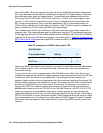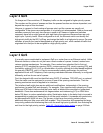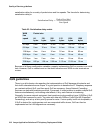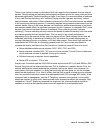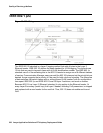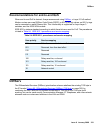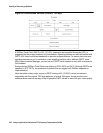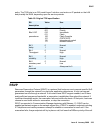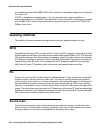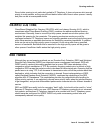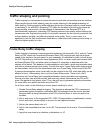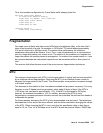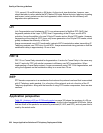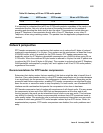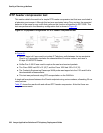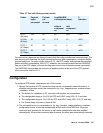
Quality of Service guidelines
324 Avaya Application Solutions IP Telephony Deployment Guide
to the better-than-best-effort (BBE) DSCP that is defined on the network region form. By default,
this value is 43.
If RSVP is enabled on a network region, it is very important that it also be enabled on
associated routers. If not, all RSVP reservations fail, and all voice traffic in that region is marked
with the BBE DSCP, which will generally receive degraded service versus the EF (DSCP 46)
DiffServ Code Point.
Queuing methods
This section discusses common queuing methods and their appropriateness for voice.
WFQ
Weighted fair queuing (WFQ) is similar to first in, first out (FIFO) queuing, except that it grants a
higher weight to small flows, and flows that are marked with higher DiffServ or IP TOS priorities.
This queuing strategy does allow smaller (for example, telnet) and higher-priority (for example,
IP Telephony) protocols to squeeze in before high-flow (for example, ftp) packets, but does not
starve off any traffic. By itself, it is not appropriate for IP Telephony traffic because high-flow
traffic can still delay IP Telephony traffic, and cause unacceptable latency and jitter.
PQ
Strict priority queuing (PQ) divides traffic into different queues. These queues are usually high,
medium, normal, and low, based on traffic type. This form of queuing services the queues in
order of priority, from high to low. If there is a packet in the high-priority queue, it will always be
serviced before the queue manager services the lower-priority queues. With priority queuing,
however, it is possible to starve out lower-priority flows if sufficient traffic enters the high-priority
queue. This mechanism works very well for IP Telephony traffic (where IP Telephony bearer and
signaling are inserted in the high-priority queue), but might work less well for routine data traffic
that is starved out if sufficient high-priority traffic arrives.
Round-robin
Round-robin (sometimes called custom) queuing sorts data into queues, and services each
queue in order. An administrator manually configures which type of traffic enters each queue,
the queue depth, and the amount of bandwidth to allocate to each queue.



